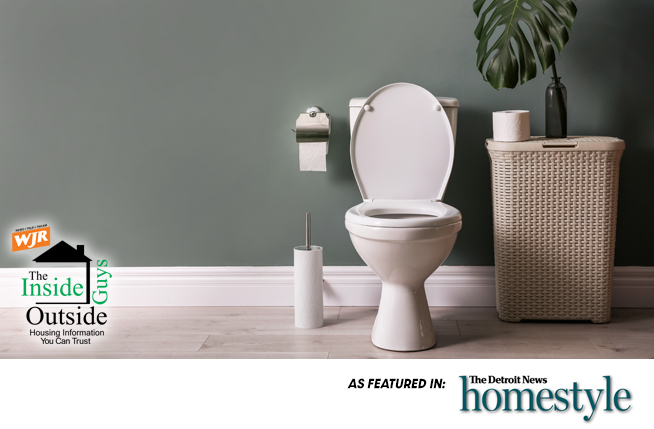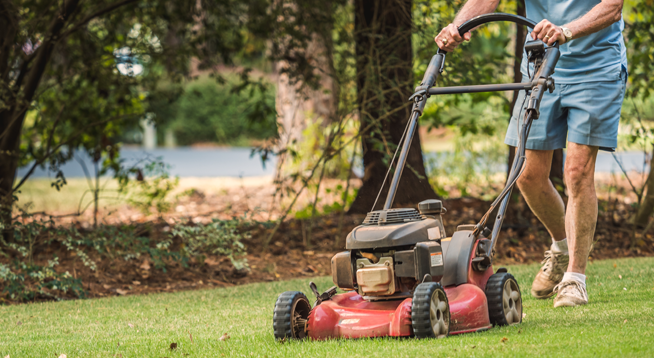
By Ken Calverley and Chuck Breidenstein
DETROIT, October 21, 2021 ~ What do the words dunny, loo, bog, and john have in common? They are used throughout the world to refer to the bathroom, which houses the throne.
Forget iPhones, big-screen TVs, electric cars and all the rest. Many believe the greatest invention of all time is the modern day toilet.
The concept was born 5,000 years ago. Sailing ships would extend seats with holes in them over the gunwale, public facilities in Rome would furnish benches with holes cut over flowing water and wooden platform seats were cantilevered over castle walls to accommodate the wealthy.
In some civilizations, using the toilet was a communal affair, where the facilities could accommodate several persons engaged in discussion while sitting.
The subject in “modern” society is often taboo to the point where, 30 years ago, you wouldn’t even see a toilet in the bathroom of the Brady Bunch; it wasn’t until the ’70s that Scott Tissue began to call its product “toilet paper.”
But John Harrington’s invention of the water closet in 1596 and Alexander Cumming’s creation of the “S” trap to keep water in the bowl have done as much to advance civilization as any modern convenience.
The World Health Organization (WHO) estimates that 40% of the population does not have access to such facilities and more than 800,000 people die every year because of inadequate sanitation. Even the Bible refers to sanitation in Deuteronomy, with the idea of relieving yourself of bodily waste and burying it out, away from, the camp.
We’ve come a long way from hanging outhouses over the river. In China, there is a 32,000-square-foot public facility that houses more than 1,000 toilets and urinals and includes free Wi-Fi.
It was New York City around 1842 that first obtained pressurized water when the Croton Aqueduct was completed. This allowed the city to furnish water to individual homes and connect sanitary sewer pipes to storm sewer pipes to carry waste to rivers.
Wealthy homeowners installed “indoor privies” – often with double doors to hide odors, since the concepts of venting were not yet understood.
At a plumbing conference in 1875, principles for venting sewer pipes were introduced and the rest is history. As long as we put enough water in the system and allow air to move both ahead of and behind the sewage, it will flow downhill.
Older toilets may use up to 8 gallons per flush (GPF) while new units are limited to a maximum of 1.6 GPF. Even though the typical cost per flush is only 1.3 cents, when you consider the average person will flush 5 times per day, its easy to see the impact of water conservation.
Unfortunately, the sewer systems that carry waste to treatment plants were designed to use a lot of water to carry the material. Modern day ultra-low-flow (ULF) devices may use so little water that sewer mains are becoming clogged with solid waste. This is due, in part, to regulations that forced the separation of sewer and storm water to prevent the mass deposit of raw sewage into rivers and lakes.
Initially, ULF devices were not effective and it became a matter of habit to flush them two or three times with every use. Indeed, there was a bit of a “black market” for older toilets when owners of new homes, after having received their permits to occupy, would change out the new toilets and install older, higher volume, units.
Knowing the average person will deposit .4 pounds per day into the system, it’s easy to understand the potential problem. Add to that the fact people also use toilets as trash receptacles, depositing all forms of paper product in the system.
Older toilets may lose efficiency if mineral deposits accumulate in the trap or in the rim feed where water enters the bowl. Keeping these clean can help. In homes where the pipes themselves may have reduced capacity due to such accumulation, you can install pressurized toilets that use a bladder in the water closet that contains air. When the unit fills with water, the air is compressed and “forces” the water out when the unit is flushed.
Many toilets require replacement of the stopper or flapper in the tank to prevent constant water leakage. A running toilet can easily waste several thousand gallons a day. If you suspect, but don’t hear, a leak, put some red food dye in the tank and see if it leaks into the bowl.
Today, commodes are available with a broad range of features, from the Toto unit that cleans, soothes, messages, heats and scents the experience to in-house composting units that use little to no water and can provide nutrients for your garden.
And if, during an event like the Super Bowl, you flush and realize there is no water, relax. You just experienced a “toilet surge,” when millions of people ran to the bathroom during an ad break and all flushed at roughly the same time.
The World Toilet Organization (WTO), has declared Nov. 19 as “World Toilet Day.” Perhaps a day to count our blessings and reflect on our great good fortune.
When needed, you will find some great plumbers at InsideOutsideGuys.com.





